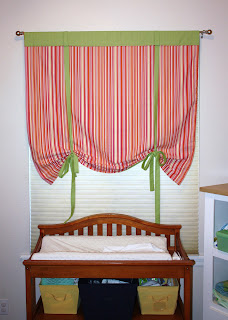We all have them...car seats. And if you're like me, you are using an infant car seat that was bought for an older child and the pattern is getting a little old.
Booooooring!
And if you are also like me the thought of tearing apart the padding and making a completely new one is a little daunting. So why not just make a slip cover that goes over the existing fabric padding and gives the car seat a new look? Brilliant!
Here are the steps you need for a quick slip cover to put over you existing car seat padding for a quick new look!
Supplies:
Car Seat Padding
coordinating fabric/thread
basic sewing supplies (scissors, pins, etc.)
First you'll need to take off you car seat padding and make a pattern. My car seat padding was two large pieces sewn together at the seat. I simply laid the cover down as flat as possible to trace each piece onto a big piece of muslin. (You can always trace the pieces right onto your fabric and skip the step of making a pattern. But I like the idea of having a pattern available to make other slip covers later on.)
Next, cut out your pieces with as much seam allowance as you can spare. I added at least 4" all the way my pieces.
Do a quick basting stitch where the two pieces meet.
Lay the pattern in the car seat and center.
TIP: I learned while making this slip cover that the best option was to have elastic only on the top and bottom of the slip cover, and not on the sides where the handle moves up and down. As little bulk as possible will make moving the handle easier.
Using a marking pencil and straight pins, work your way around the car seat marking off where the slip cover should be and where the elastic should be sewn in. Make sure that the elastic is going to go low enough behind the car seat that it will hold in place.
TIP: It's also helpful to put something heavy in the car seat while you're marking it to make sure you keep it centered and don't lift the fabric up.
Trim the excess fabric based on your markings.
If using muslin: lay pattern on fabric and cut out both pieces.
Double check the pattern in the car seat, and pin all seams and elastic casings.
Sew hems on sides and elastic casings on top and bottom.
Attach elastic.
Once the hems and elastic are all in place put the slip cover on the car seat and mark the shoulder and seat belt openings.
Using the button feature on your machine, sew button holes for all strap openings. Make sure to go slowly to get a really solid hem.
Trim any excess fabric from strap openings.
Finally, install the slip cover in your car seat.
I hope this project helps those of you that are bored with your car seats and only have time for a quick slip cover!



























